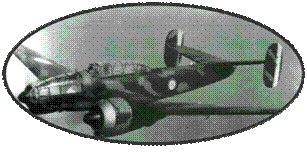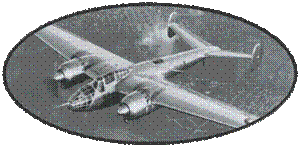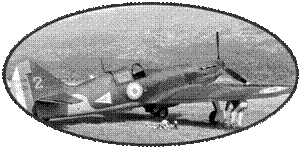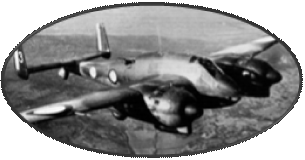In 1930, the company Morane-Saulnier
presents at the Salon de l'Aéronautique, a new prototype
fighter: the MS 224. The aircraft, classic, is very similar to the
MS223, although larger than the latter. It is thus a monoplane with
parasol wing and fixed landing gear with broad way. As the latest
prototypes of the MS223, the landing gear includes two independent
wheels, without axle so, damped by a bungee suspension. It is powered
by a Gnôme Rhône 9Asb 420h driving a two-bladed propeller.
During the first tests, the aircraft receives wheel fairings and
an oleo-pneumatic suspension. On the version presented at the show,
the engine cylinders protrude from the hood and a cone of large
size extends the motor axis. Subsequently, a hood fully enveloping
the engine will be tested. At the tests, the aircraft managed to
exceed 300 km / h, but it will be destroyed by accident in June
1932.
From this aircraft was derived
the MS 225. Powered by a Gnôme Rhône 9Kdrs of 500hp
resulting in a two-blade wooden propeller the MS225 adopts an integral
hood. The device is of mixed wood construction, and Aluminum partly
covered, the cockpit being covered with aluminum sheets having a
"corked" effect. The drift and the wing have been enlarged
as well as the tank whose capacity goes from 260 to 310 liters.
The engine, compressed, allows the aircraft to reach high altitude,
which requires the installation of an oxygen device for the pilot.
By cons, it still does not have a radio ... The armament consists
of two machine guns 7.5mm on the hood. The MS225 made its first
flight in October 1932. Meanwhile, after testing with the MS224,
the Ministry of Air had ordered a first batch of 50 MS225 aircraft,
followed by 5 additional, all production being carried out in workshops
of Puteaux. A Chinese warlord also bought 6 aircraft, but only 3
will appear to be, manufactured and delivered.
The MS225 will be assigned
in unit from 1933. It is GC I / 7 of Dijon, GC I / 42 of Reims,
GC II / 6 of Chartres which will receive the new planes. The goal
is to provide the French Air Force with "modern" transitional
aircraft until the arrival of the promising Dewoitine D500, and
especially MS 406. The MS225 will be gradually removed from the
first lines from 1935 to be transferred to the flying schools.
It should be noted that it
is Morane MS225 that the acrobatic squadron of Dijon will use to
participate in air shows by presenting spectacular figures, including
a complete Looping in tight formation of 4 devices!
When the Germans launched
the offensive in France on May 10, 1940, 34 MS225 were still present
in school but none will survive the conflict.
A naval version will also
be studied: the Morane-Saulnier MS226. it has a landing gear and
the rear stand is replaced by a tail wheel. Its windshield is reinforced
and it logically receives folding wings from the 3rd prototype.
Curiously, the MS226 was devoid of compressor, which significantly
reduced its performance. From March 1934, the landing tests begin
on a track "terrestrial" representative of that of an
aircraft carrier. These first tests show weakness of the stick and
after strengthening, the test of 3 successive landing is successfully
carried out in March 1935. The Naval Aviation does not finally hold
the aircraft, preferring the Dewoitine D373 and 16 MS 226 manufactured
will be paid in schools before being transferred to the Air Force
in 1938.
Based on the MS225, a prototype
is made to test and validate the gun engine. Under the designation
MS227, it is powered by a Hispano-Suiza 12Xcrs incorporating a 20mm
gun placed in the V created by the two rows of cylinders. The engine
with a power of 690ch drives a quadripal wooden propeller. The new
engine with its gun, heavier, required a strengthening of the motor
partition and the cell. In order to compensate for the shift of
the center of gravity induced by this overweight, the empennage
is enlarged and the wing slightly advanced. The prototype made its
first flight in late 1933, and the firing campaign conducted later
allowed to validate the engine-gun torque, a concept that will be
used in particular on the D500 or MS406.
It seems that an MS228 version
has been studied, but there is no information on this aircraft.













